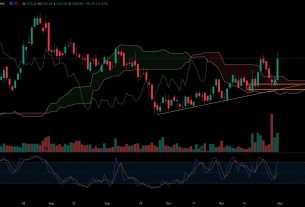
In my experience of being in Options market for almost 2 decades now, I have seen many traders get out of trading this scientific instrument too soon, sometimes even within just a few trades. The word scientific may have the reasons for these few early departures. The nature of this instrument is such that one must look at multiple factors while trading them.
Looking at many inherent comforts as an instrument, Options attract a lot of us to switch our trade from equity or future to Options. Now, we traders have always been price chasers but when we overlay our price forecast on Options, they may just have a different course which may not exactly mimic the course price of the underlying has taken.
This could put off our profits if not evaluated correctly. So, to optimize the benefits of the limited loss yet unlimited profit characteristic of Options pay-off, one must look at the aspect that creates such a divergence and provide for it or at least be vigilant about it so that it does not come as a surprise. A Multi-facet evaluation based on following 3 factors could just give us enough foresight to avoid any negative surprise. Each one could give us a safe exit strategy definition.
#1 Price: This is one factor most of us know and do analyze as well. Since the price of the option is what is going to define our profitability most of us do have the analytical tools ready to see what happens to the option premium/ premiums (in case if it is a multi-leg strategy) upon both favorable and unfavorable moves.
Exit Strategy: Price at which risk tolerance hits the limit in terms of premium loss that becomes our exit Point.
#2 Time: Time has always been particularly a friend or a foe in option trading. Passage of time has no impact on our profit or loss while trading underlying equity. A lot of option buyers have learnt it the hard way that price of an option reduces with passage of time regardless of the price movement. That certain portion of reduction in premium upon passage of time also known as time decay is required to be accounted for in every option trade. The way this factor gets evaluated is that in case one is net buyer of the options, one needs to evaluate by what time the passage of time would have impact on the option premium overshadowing the positive impact of favorable price action.
Exit Strategy: One needs to decide threshold the passage of time as stop loss while evaluating so that situations where option profits are miniscule despite price objective being achieved can be avoided.
#3 Volatility: When we talk about volatility, we are talking about volatility input in the option prices, This is better known as implied volatility a.k.a. IV. Now, not in a normal situation but in times of major events like results or policy decision, the implied volatility increases and the same settles down as soon as the event is over. So, if our trade is passing thru an event, we must see if the existing risen IV falls down post event, what impact does that have on our option trade.
Exit Strategy: In such a situation Buy positions in Options post event get hammered as Fall in IV = Fall in Premium. So, if not IV, at a fallen IV & Underlying SL level the loss in premium for buy options’ must make economic sense of profitability while evaluating.
Nowadays there are many tools available which help us with looking at our proposed option trade/s on multiple dimensions of underlying price, time and volatility. The idea is to take a vigilant call on whether to execute based on the pre-trade Multi-Facet evaluation to get all that you ask for and more from an underlying forecast using options.
Disclaimer: The views and investment tips expressed by experts on Moneycontrol.com are their own and not those of the website or its management. Moneycontrol.com advises users to check with certified experts before taking any investment decisions.

